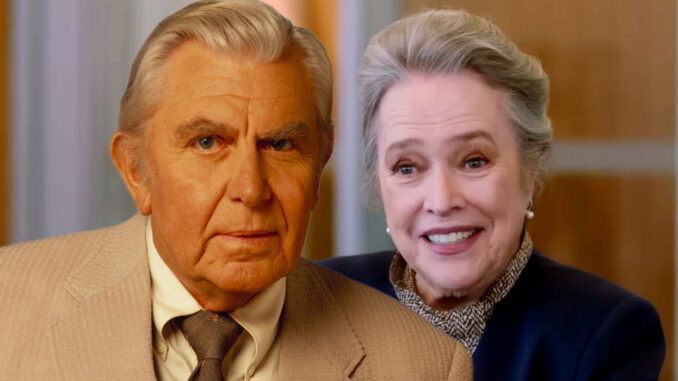
The polished obsidian of the boardroom table reflected Eleanor Vance’s silver hair like a glacial river. At sixty-eight, she was an anachronism in Matlock 2025, a firm that had long shed its original partners’ names for a sleek, three-letter corporate moniker and a philosophy that prioritized profit margins over courtroom principles. She wore a tailored suit, impeccably cut, a quiet defiance against the casual, almost predatory, confidence of the younger partners around her. Her eyes, still sharp as a hawk’s, scanned the faces – men and women she had mentored, seen rise, and now, regrettably, seen fall.
Eleanor was a relic, a living monument to a bygone era of law. She’d built the civil litigation department from a dusty back office to a national powerhouse. She remembered the thrill of the chase, the meticulous unwrapping of truth from layers of deception, the quiet satisfaction of seeing justice served. But the firm today, with its AI-driven legal research, its sleek glass towers, and its cutthroat acquisition strategies, felt less like a temple of justice and more like a high-stakes hedge fund with legal licenses.
The confrontation had been brewing for months, a slow, toxic leak within the firm’s gleaming walls. It started with whispers, then hushed internal memos, concerning a major pharmaceutical client. A new drug, rushed to market, with a suspiciously glossed-over clinical trial. A whistleblower, a young research scientist, had come forward, his claims chillingly precise. And the firm, Eleanor’s firm, was not just defending the pharmaceutical giant; it was actively orchestrating a campaign to discredit the scientist, to bury his data, and to silence him with the full, crushing weight of their legal might.
Eleanor had tried the traditional routes. She’d questioned, advised, even pleaded. She’d invoked the firm’s founding principles, the legacy they were supposed to uphold. She’d spoken of ethics, of integrity, of the moral compass that should guide every legal action. But her words, once law in these halls, now felt like quaint anecdotes from a sepia-toned past. The Managing Director, a man named Sterling Vance (no relation, thankfully, a fact Eleanor had recently found herself grateful for), had listened with a practiced, almost pitying smile. “Eleanor,” he’d said, his voice smooth as aged whiskey, “we are a business. A very successful one. This is about protecting our client, and by extension, our market share. And yours.”
But Matlock wasn’t about market share. Matlock was about the truth, often found in the overlooked detail, the small injustice amplified by power. The spirit of Matlock wasn’t in a tweed suit anymore; it was in the steely gaze of a woman who had seen it all, and recognized the rot for what it was.
The breaking point arrived with a late-night email, a redacted internal report accidentally forwarded to Eleanor’s secure account. It detailed the pharmaceutical company’s deliberate suppression of adverse event data, a cover-up sanctioned at the highest levels. And it implicated several senior partners within her own firm in the strategy to mislead regulators and public alike. The betrayal was a physical blow, a cold knot in her stomach. This wasn’t just defending a client; this was active complicity in a crime, an egregious assault on the public trust.
Now, she sat in the boardroom, not as an advisor, but as an accuser. Sterling Vance, impeccably dressed, began his usual Monday briefing, charts and graphs illustrating impressive quarterly gains. Eleanor let him finish. When he finally looked her way, a faint query in his eyes, she spoke. Her voice, though softer than his, commanded the silence of the room.
“Sterling,” she began, her gaze sweeping over the silent partners, “I founded a firm that stood for justice. A firm that sought truth. We never compromised our integrity for a client, no matter how lucrative. And we certainly never became complicit in concealing a direct threat to public health.”
A tremor ran through the room. Sterling’s smile vanished. “Eleanor, I don’t know what you’re implying.”
“I’m implying, Sterling,” she countered, her voice gaining strength, “that this firm has abandoned its principles. I’m implying that we are actively subverting justice, destroying a good man’s reputation, and putting countless lives at risk for the sake of profit. And I am here to tell you, as a founding partner, as a lawyer sworn to uphold the law, that this stops now.”
She produced a leather-bound folder, not voluminous, but heavy with conviction. “I have evidence, Sterling. Evidence that this firm is not just representing a criminal enterprise, but enabling it. Evidence of our own partners’ direct involvement.” She opened the folder, revealing printed documents, highlighted lines, and handwritten notes that pieced together the labyrinthine conspiracy. The room grew colder, the reflections on the obsidian table now mirroring not just her face, but the dawning fear in the eyes of others.
This wasn’t just a veteran lawyer confronting her firm; it was a ghost from its conscience, risen to demand accountability. It was Matlock 2025, stripped of the folksy charm, armed with digital evidence and an unyielding moral compass, standing alone against the monolithic power she had helped create. The fight would be brutal, perhaps career-ending. But as Eleanor Vance looked at the faces around the table, she knew that some legacies were worth more than any profit margin. And some battles, no matter the cost, simply had to be fought. The trial, she knew, had just begun.
